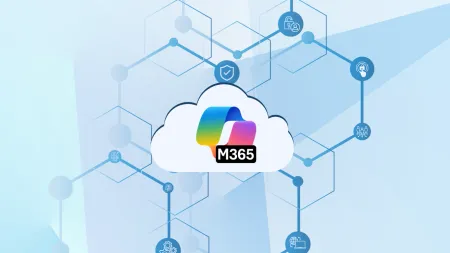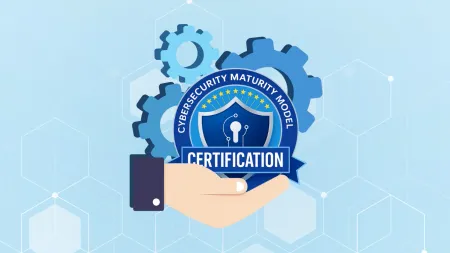Standard Form SF-XX in FAR Contracts: What Contractors Need to Know
Understand the role of Standard Form SF-XX in FAR contracts. Learn how to complete it, key compliance requirements, and why it matters for government contractors.

This is Post #3 of our FAR CUI Compliance Deep Dive Series
If you missed the earlier posts, start here to get the full picture:

The United States government has a duty to ensure that every federal contract is awarded and managed fairly, openly, and consistently. To support that mission, the Federal Acquisition Regulation (FAR) provides the framework that guides how those contracts are structured and executed. Part of that framework includes the use of Standard Forms (SF), which establish uniform processes across agencies. Each form is numbered for its specific purpose, so “SF-XX” simply serves as a placeholder to represent the different forms used in federal contracting.
What is Standard Form SF-XX?
The use of the term “Standard Form SF-XX” is meant to be used as a stand-in for various types of forms used in government contracts. Each Standard Form (SF) has a clearly defined role under the FAR. Using the correct form at the correct stage ensures consistency, compliance, and smooth communication between contractors and the government.
Common Standard Forms in Federal Contracting
| Form Number | Title | Purpose |
|---|---|---|
| SF-33 | Solicitation, Offer, and Award | Used to issue formal solicitations and capture the contractor’s offer and government award. |
| SF-30 | Amendment of Solicitation / Modification of Contract | Documents changes to a solicitation or contract, including terms, conditions, and pricing. |
| SF-1449 | Solicitation/Contract/Order for Commercial Products and Services | Streamlined form used for commercial item acquisitions under FAR Part 12. |
| SF-26 | Award/Contract | Used to formally award a contract in certain procurement methods. |
| SF-1442 | Solicitation, Offer, and Award (Construction, Alteration, or Repair) | Used for construction contracts, including solicitation and award. |
| SF-18 | Request for Quotation (RFQ) | Simplified form used to request pricing and offers from vendors. |
| SF-1447 | Solicitation/Contract | Used in sealed bidding for large contracts. |
As you can see, there are various standard forms that must be submitted when taking certain procedural steps within a government contract. Each form serves a specific purpose in the contracting process, and contractors must carefully follow FAR requirements to ensure they are using the correct form at the correct stage of the procurement.
💡 The specific form number for FAR CUI has not yet been identified and is now called SP-XX.
Key Components of SF-XX in FAR Contracts
There are certain components of SF-XX within FAR contracts that will always need to be present and that will have a significant impact on the value of the contract itself. Among the elements that need to be included are as follows:
-
General Information Section – There needs to be a general informational section within any FAR contract that explains what is expected of the contractor when performing their work for the government agency. This part can be thought of as a general overview of the work that will be performed.
-
Scope and Terms – The FAR contract will then get more specific as it must outline the specific scope and terms of the contract and what is expected of the contractor. The purpose of this is to ensure that the contractor fully understands what they are supposed to deliver for the government within this contract.
-
Compliance and Regulatory Requirements – There should also be a section where all the regulatory requirements are spelled out. This is significant because it offers the contractor the opportunity to understand the specific regulatory guardrails that they must stay within.
-
Financial and Payment Terms – This is probably the most important part of the contract. These terms will specify when and how much the contractor can expect to earn for delivering on the contract.
These are the key components that you should see in every FAR contract. If any of those elements are missing, then it is a sign that the contract has not been structured properly and could create compliance or performance risks for you down the line.
Why SF-XX Matters for Contractors
On the face of things, it might appear that standardized forms and regulatory compliance would be nothing more than a burden for contractors, but that isn’t exactly the case. In reality, contractors benefit greatly from the various forms as they should thoroughly document the intended work and can ensure that everyone is on the same page prior to beginning the work of the contract.
With it all spelled out for in the SF-XX portion of the contract makes it easier to follow that roadmap. It also helps them to ensure that they meet the regulatory requirements set out by the government for the work that they will be performing.
Steps to Properly Complete and Submit SF-XX
Standard Forms are generally issued and managed by the contracting agency, not the contractor. However, contractors do interact with the forms by signing, certifying, or completing their portion. Submitting proper SF-XX in a contract is hugely important so that the contract can be finalized and approved. It is important to remain in compliance with government regulations, and the best way to do so is to ensure that the SF-XX of contracts is submitted correctly the first time. A few things that contractors can do to help this along include:
-
Have an Understanding of All Fields and Sections – Never submit a contract without a complete understanding of each field and section and how it relates to the work that you will be doing. Knowing what you are getting into is the cornerstone of performing work for the government.
-
Ensure the Accuracy of Each Section – Completely ensure the accuracy of each section of the contract so that it is correct in its formatting and in the specifics of what it says.
-
Submit the Contract Through Government Portals – The contract will also need to go through the proper government portals so that it can be handled and processed by those who need to see it. Double-check that you are sending the contract form through the correct portals before submitting it to avoid delays.
-
Maintain Records for Auditing Purposes – Always maintain copies of your records for auditing purposes. You may need to produce records at a future date to verify that you have performed a certain aspect of your work correctly.
These are the types of steps that you can take to get your SF-XX contract properly completed the first time.
Challenges and Common Errors in SF-XX Contracts
A few stumbling blocks have caused issues for those who have worked with special forms in the past. Among the things that might lead to the rejection of your submission include:
-
Misunderstanding Important Clauses – If you fail to understand a clause within your contract then you might be putting yourself in jeopardy of not being able to complete the contract at all.
-
Missing Documents – Always check that you have all the correct documentation submitted and ready to go before you submit your contract form. You don’t want to run the risk of missing documents that could prove pivotal to your ability to land the contract.
-
Slow Government Processing Times – Finally, you will need to have patience with the process. Slow government processing times are a fact of life, and you might have to wait longer than you would like to before your contract can be approved.
Staying compliant with FAR contract regulations requires constant attention to evolving requirements. If you’re unsure how to move forward or need help navigating the process, reach out to Agile IT. Our team is here to guide you through each step with clarity and confidence.





